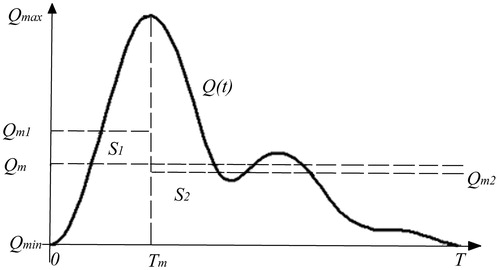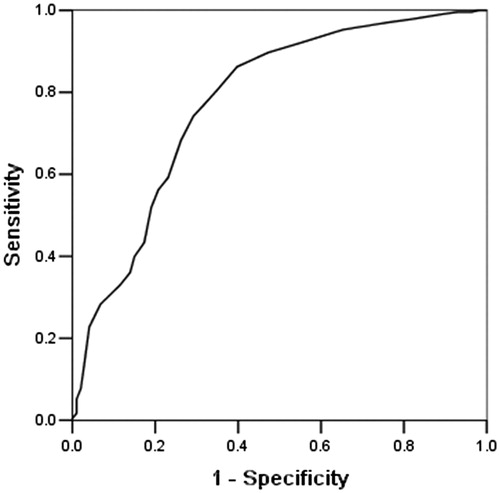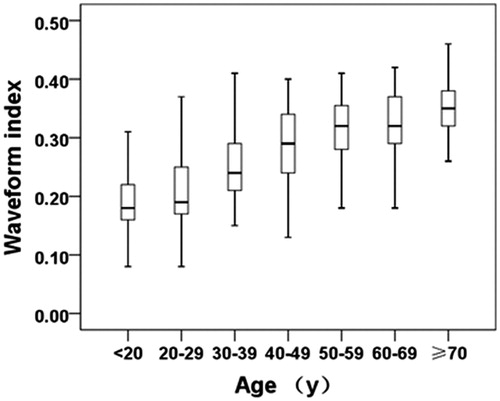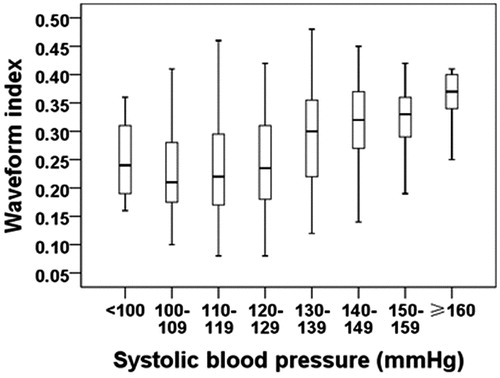Figures & data
Figure 1. F-BVP divided by the maximum point. The abscissa is time; the ordinate is the amplitude of F-BVP. Q(t) indicates F-BVP waveform; T indicates full cardiac cycle time; Tm indicates the time of the maximum point of F-BVP waveform; Qmax, Qmin, and Qm indicate the maximum, minimum, and the mean values of the F-BVP waveform, respectively; Qm1 and Qm2 are the mean value of the F-BVP waveform before and after the maximum point, respectively; S1 and S2 represent the areas under the two parts of the waveform divided by the maximum point.

Table 1. The basic characteristics of the subjects.



